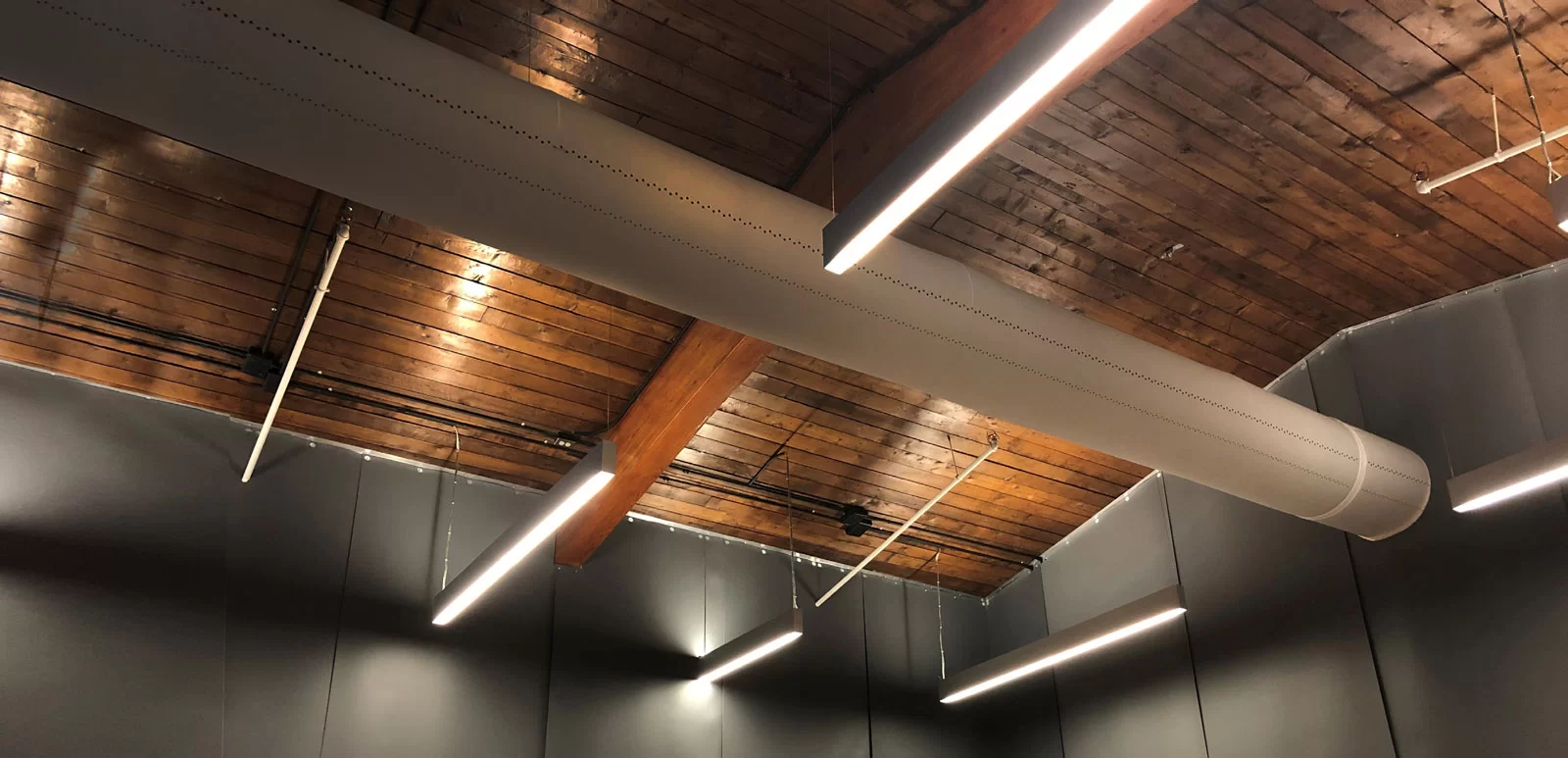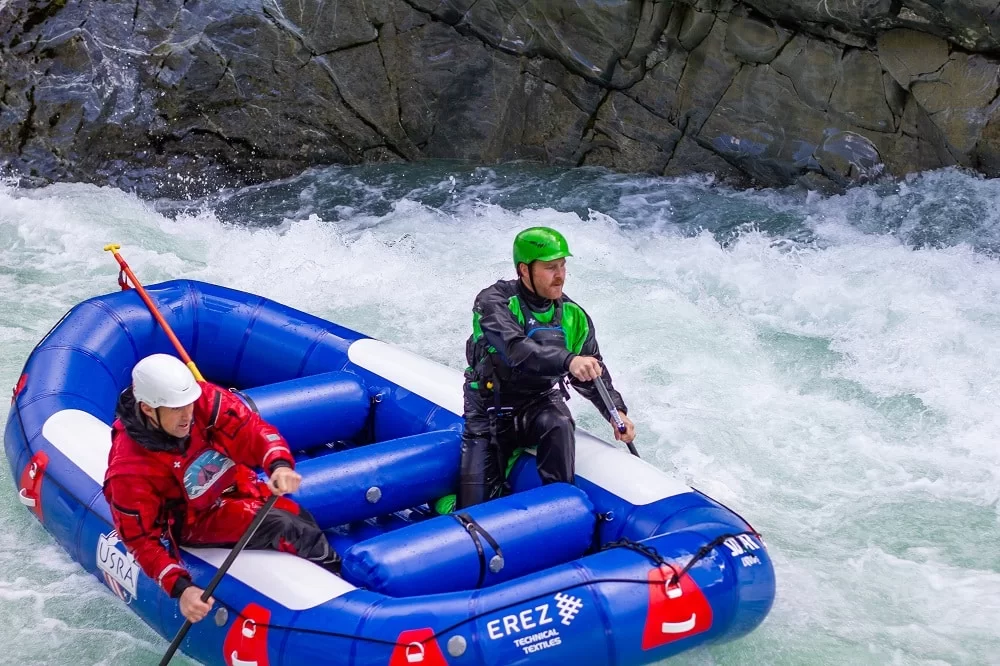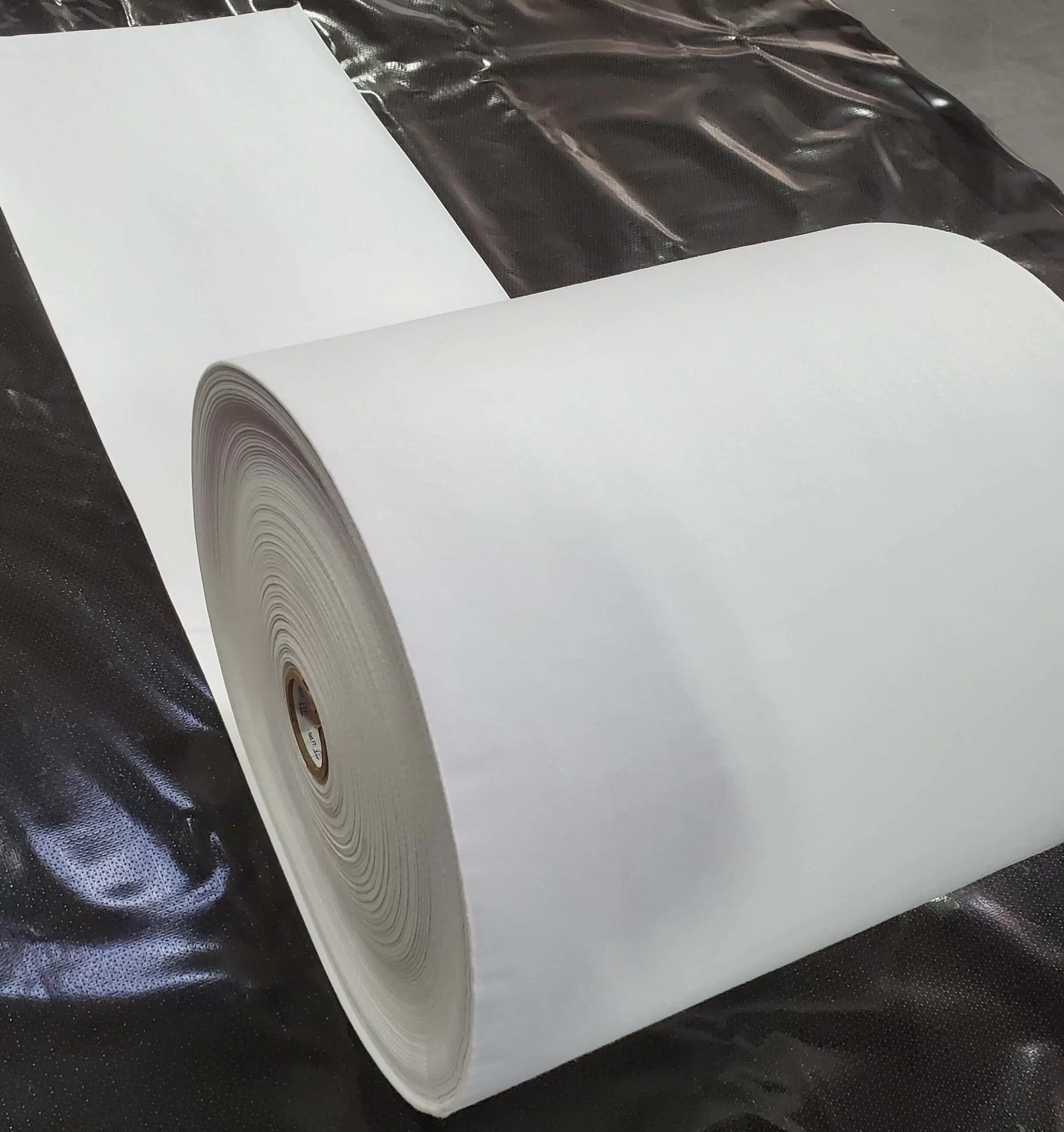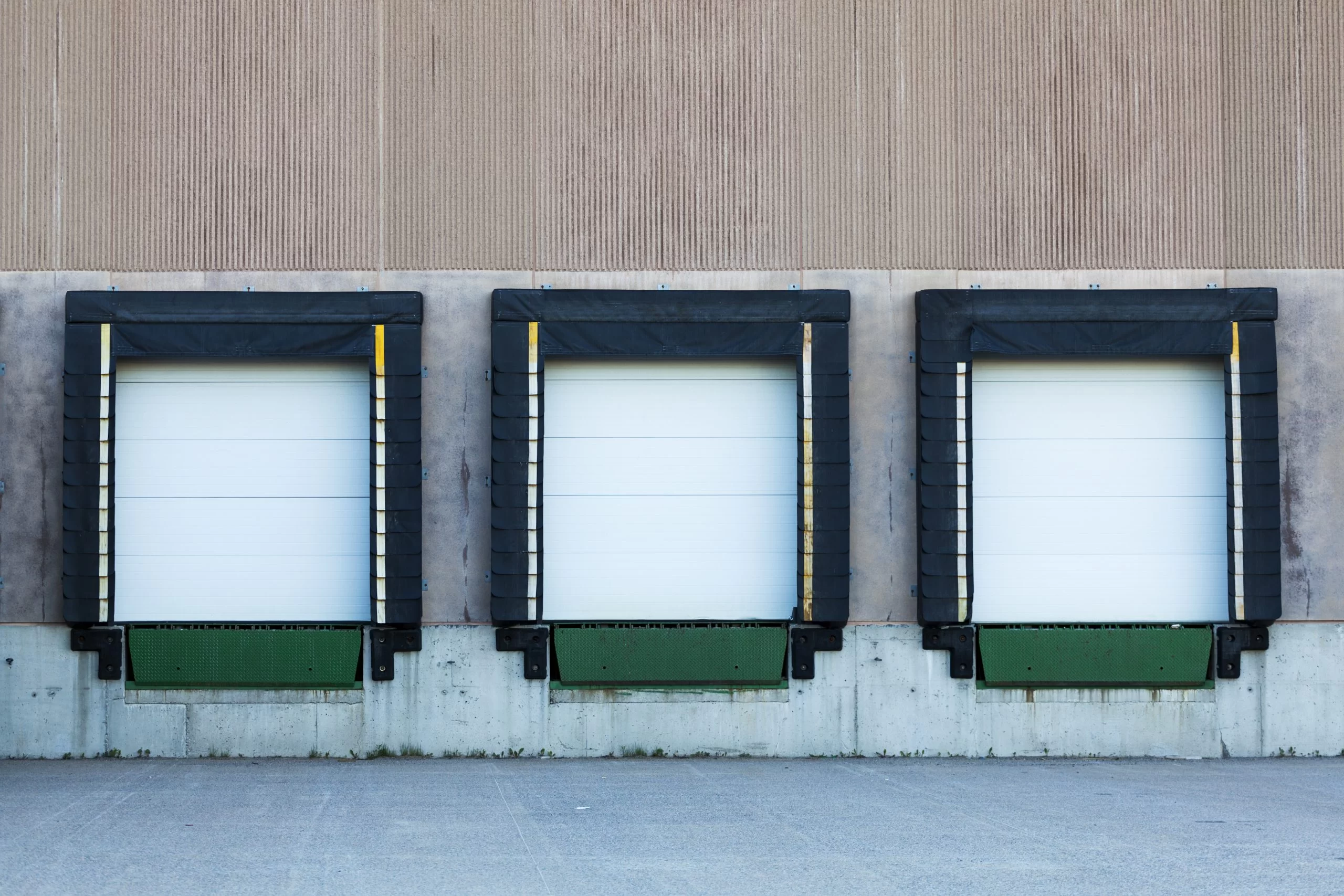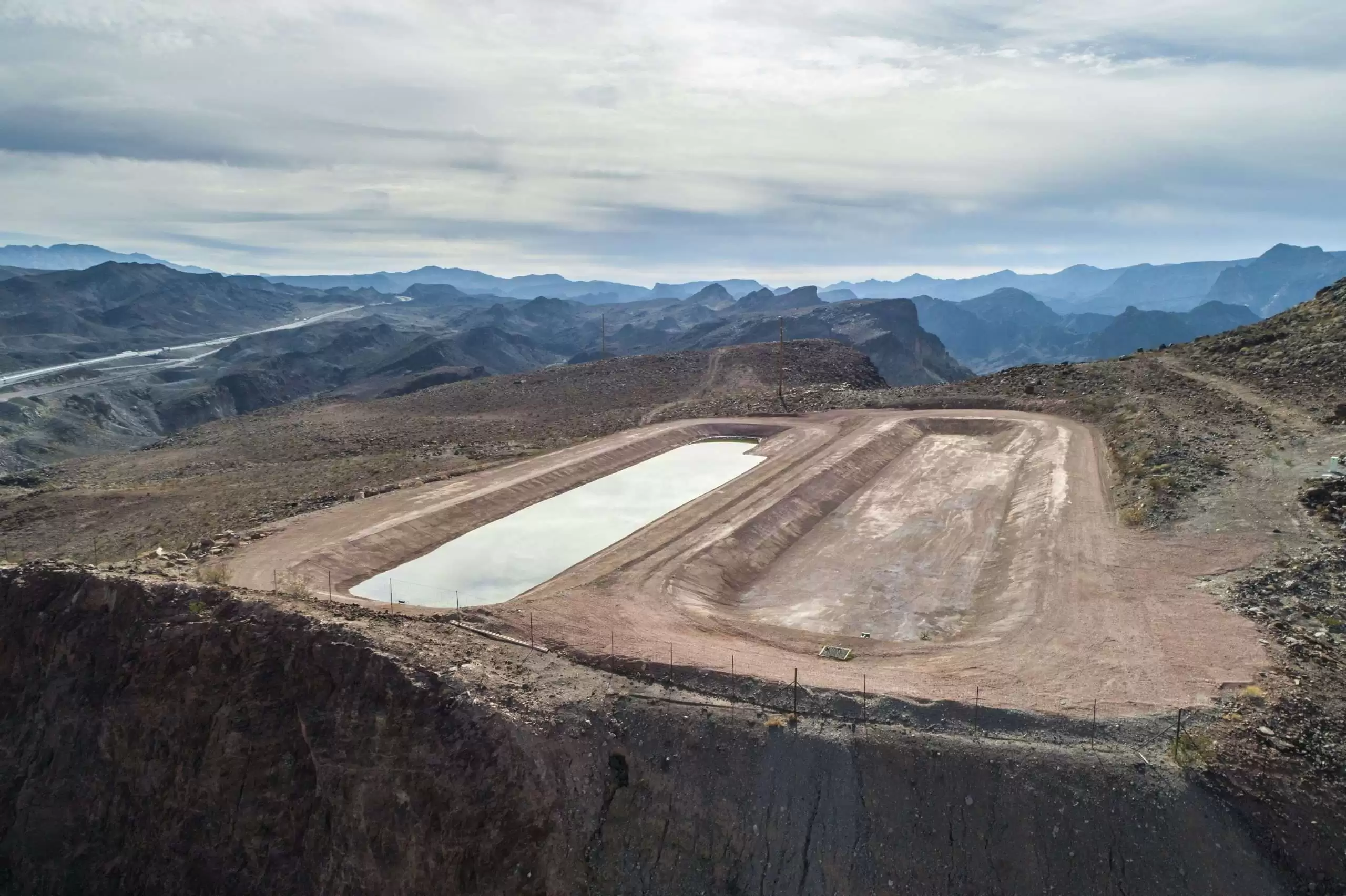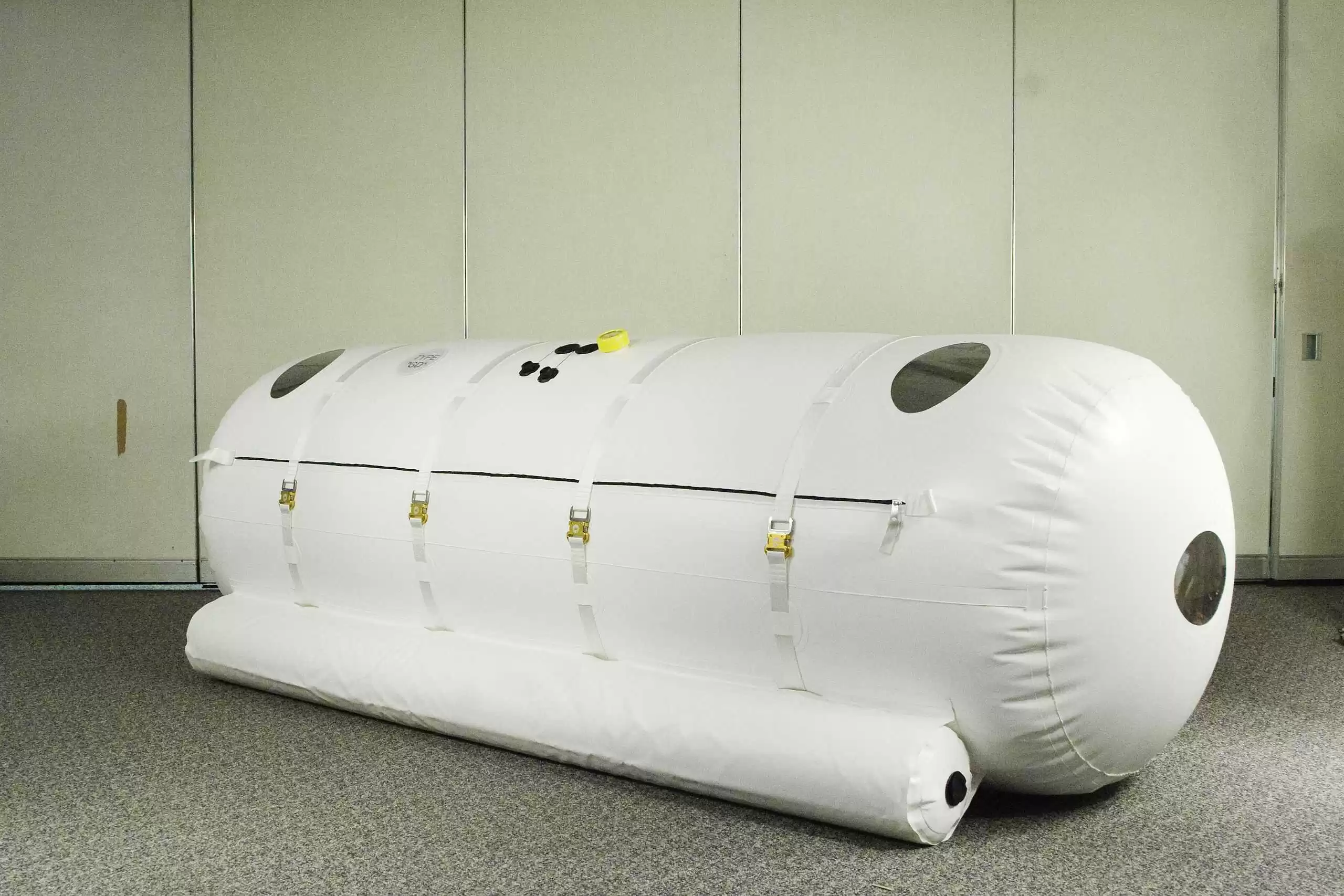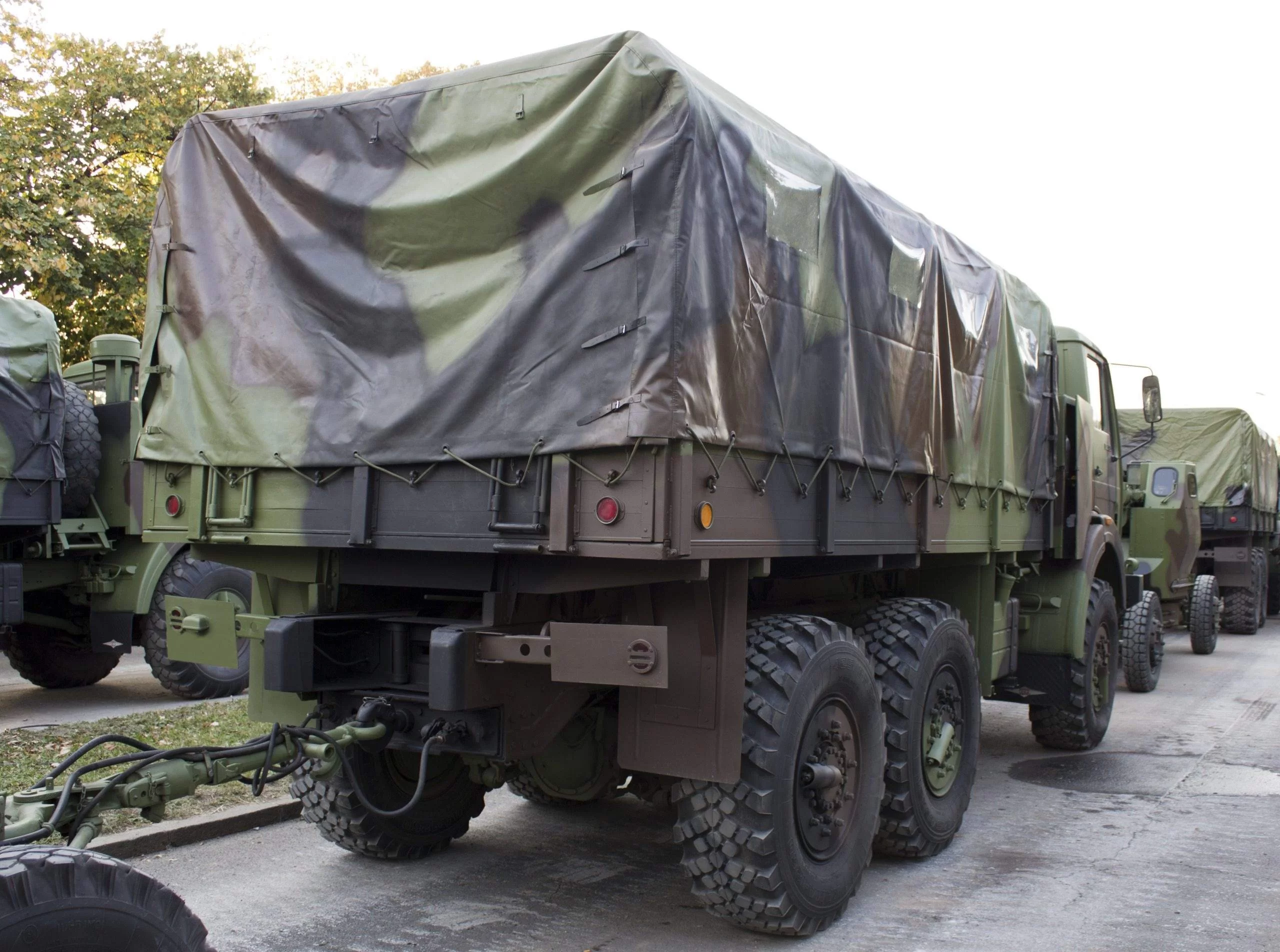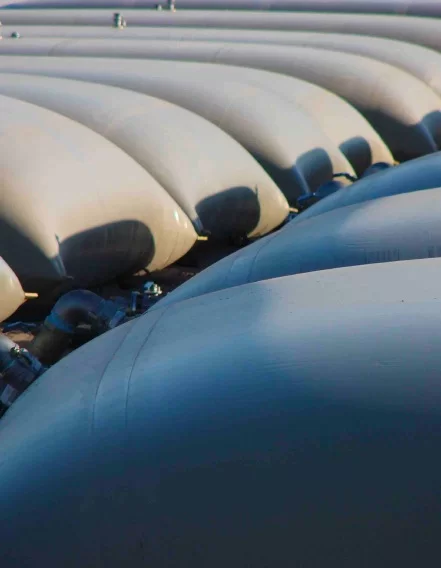Performance Tests to Ensure Suitability for Your Application 1.2 – UV Resistance
Outdoor weathering is done to help determine how long a material will last exposed to the sun.
Any polymer left exposed outside will slowly degrade and start losing its chemical and mechanical properties. Like chemical resistance testing UV exposure and UV resistance testing can be a significant factor in selecting the correct material. These results are usually in hours exposed or watts which is then correlated to estimated years of exposure All polymers are affected by UV exposure in varying degrees and the lifespan of the polymer depends greatly on additives and chemistry used.
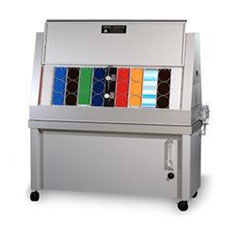
- ASTM G154-16: Standard Practice for Operating Fluorescent Ultraviolet (UV) Lamp Apparatus for Exposure of Nonmetallic Materials
- ASTM G155-21: Standard Practice for Operating Xenon Arc Lamp Apparatus for Exposure of Materials
To simulate outdoor weathering conditions, the accelerated weathering testers expose materials to alternating cycles of UV light and moisture at controlled, elevated temperatures. It simulates the effects of natural sunlight and artificial irradiance using special fluorescent UV lamps in the UVA, UVB, and UVC portions of the spectrum. It simulates dew and rain with condensing humidity and/or water spray. The QUV accelerated weathering tester is the simplest and easiest to use weathering tester available, it reproduces the damaging effects which are usually caused by sunlight caused by sunlight along with rain and dew. In a few days or weeks, the QUV UV tester can reproduce the damage that occurs over months or years outdoors.
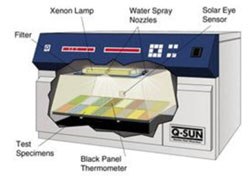 The QUV machine only concentrates testing on the short-range wavelengths 365 nm and below which is considered the most damaging range for weathering testing. The Xenon arc machine available from Q-Sun reproduced the entire spectrum of sunlight, ultraviolet, infrared and visible light between 295nm to 800nm as seen below. Using a Xenon arc tester is a more effective method to get the most accurate simulation of Sun’s damage, however this is a more expensive test than a QUV and is better suited for products that are more sensitive to the higher UV range and be based on end use application.
The QUV machine only concentrates testing on the short-range wavelengths 365 nm and below which is considered the most damaging range for weathering testing. The Xenon arc machine available from Q-Sun reproduced the entire spectrum of sunlight, ultraviolet, infrared and visible light between 295nm to 800nm as seen below. Using a Xenon arc tester is a more effective method to get the most accurate simulation of Sun’s damage, however this is a more expensive test than a QUV and is better suited for products that are more sensitive to the higher UV range and be based on end use application.
The graph below shows the comparisons of wavelengths from natural sunlight to that of both the UV testers, it shown that the QUV using a UVA-340 bulb follows the spectrum of the natural sunlight closely below 365nm beyond which the Q-Sun Xenon arc machine is better suited.
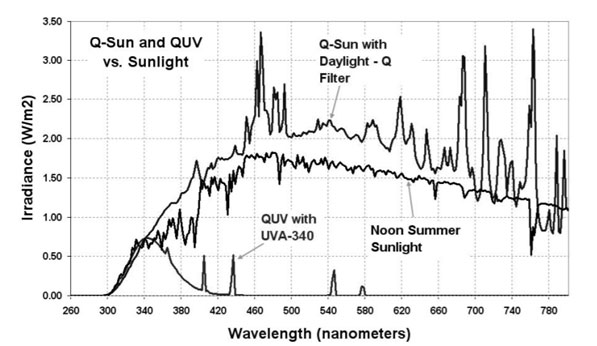
Image of wavelength comparisons between Sunlight to the Q-SUN and the QUV testers [3]
At E Squared, we regularly test all our outdoor formulations using both QUV and Xenon arc methods to improve the weatherability of our products and have also tested our materials in the natural exposure testing in Florida and Arizona which is considered some of the harshest conditions for weathering. We are proud to have many of our PVC, EIA, TPU and LLDPE-R formulations in various colors that have been tested beyond 20 years in both natural and simulated testing. At E Squared lab we have sourced materials from all over the world to give our customers the best available options when it comes to UV resistance.
[1] Q Lab- QUV Accelerated Weathering Tester.
[2] Q Lab- Q Sun Xenon Test Chamber
[3] The Essentials of Laboratory weathering, Jeffrey Quill and Sean Fowler

